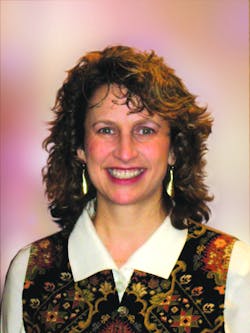Plenty of bio at FiO

There was a surprising amount of great bio coverage at OSA’s recent Frontiers in Optics event. Two of the conference tracks were mainly dedicated to bio topics, and beyond that other presentations also focused on bio. For instance, James Fujimoto of MIT, widely recognized for discovering optical coherence tomography (OCT), presented on OCT for biomedical applications as part of a tribute to Dr. Howard Schlossberg.
Among other “big names” in biomedical optics at the event was Robert R. Alfano (see Pioneers, p. 20). At the time, Alfano was preparing the BioOptics World webcast, “Key secrets of biospectroscopy,” presented Oct. 29 with Stavros Demos of Lawrence Livermore National Lab and UC Davis. We’ve gotten very positive response on the webcast, so check it out if you’ve got an interest in the spectroscopy for cancer detection and other life-sciences work; see bioopticsworld.com/resourcecenter/webcasts.html.
My faves
I enjoyed Chris Schaeffer’s (Cornell University) pinch-hit presentation on the work of Jennifer Shum and colleagues, which described femtosecond-laser ablation to sever the lateral dendrite of a Mauthner c bioopticsworld.com/resourcecenter/webcasts.html ell in the brain of a zebrafish, in vivo. I was entranced by the procedure: the extremely precise cut left surrounding cells and neural projections intact.
One presentation that generated lots of audience involvement–mainly centered on the method’s dynamic nature–was Elizabeth Hillman’s (Columbia University) presentation on organ imaging in live mice. The work involves using indocyanine green (ICG) as an in vivo contrast agent to complement fluorescent or luminescent probes. Testing showed that various internal organs respond differently to ICG, and that imaging clearly delineates the organs with good spatial resolution. Also, the delineation process yields the time-courses associated with each organ, which represent their pharmacokinetic signatures for a given dye.
Greg Faris of UC San Diego and Martin van der Mark of Philips reported new approaches to address the unsatisfactory rate of false positives and negatives produced by current mammography methods. Faris’s method relies on inhalation of different gases to generate contrast with good signal-to-noise ratio. Faris presented promising results from preliminary clinical trials.
Similarly, van der Mark said the approach Philips has pursued in concert with Bayer-Schering Pharma and the University Medical Center Utrecht (Utrecht, The Netherlands) is cost effective and patient friendly. Called spectral and fluorescence diffuse optical tomography, it is meant to complement MRI. The method “opens the door to molecular imaging in vivo in humans,” said van der Mark.
Among the exhibits, Femto Lasers, Hamamatsu, and Fianium (leader of the “WhiteLase” project to develop advanced supercontinuum fiber lasers for biomedical imaging) showcased light sources, and Chroma Technology, OptoSigma, and Swamp Optics displayed other key components of systems for life-sciences work.
I’ll be back next year; hope to see you there.

Barbara Gefvert | Editor-in-Chief, BioOptics World (2008-2020)
Barbara G. Gefvert has been a science and technology editor and writer since 1987, and served as editor in chief on multiple publications, including Sensors magazine for nearly a decade.